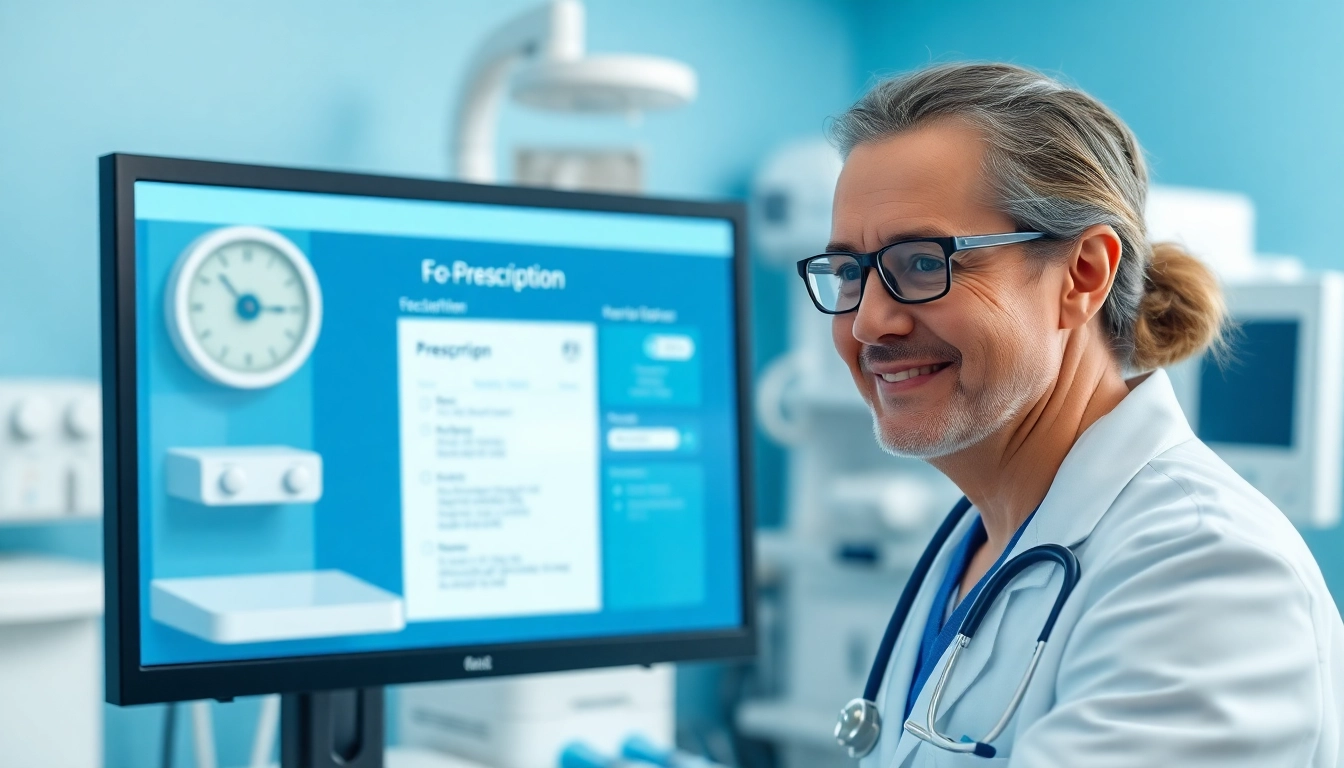What is E-Prescribing?
Defining E-Prescribing
E-prescribing, or electronic prescribing, is the digital transmission of prescription information from healthcare providers directly to pharmacies. This sophisticated practice replaces traditional paper prescriptions with a streamlined electronic process that enhances accuracy and efficiency. By embracing technology, healthcare professionals can input prescriptions into secure systems, thus reducing the likelihood of human error and improving patient safety.
Key Benefits of E-Prescribing
The transformative potential of e-prescribing can be seen across several critical areas:
- Improved Accuracy: The use of clear digital formats eliminates misunderstandings that often accompany handwritten prescriptions.
- Increased Efficiency: Prescriptions are transmitted in real-time, reducing wait times for patients at the pharmacy.
- Enhanced Safety: Features like allergy checks and medication interaction warnings help prevent adverse effects.
- Cost Reduction: E-prescribing minimizes unnecessary administrative costs related to managing paper prescriptions.
- Compliance: E-prescribing can support patients’ adherence to their medication regimens through reminders and streamlined refills.
How E-Prescribing Works in Practice
The e-prescribing workflow involves several interconnected steps:
- Prescription Creation: Healthcare providers enter the prescription details into their electronic health record (EHR) systems.
- Verification: The system checks for allergies, contraindications, and other pertinent patient information.
- Transmission: The prescription is electronically sent to the patient’s chosen pharmacy.
- Pharmacy Processing: Pharmacists receive the e-prescription, review it for accuracy, and prepare the medication for the patient.
- Patient Notification: Patients are informed when their prescriptions are ready for pick-up or delivery.
How Does Eprescribing Work in Detail?
The Process of E-Prescribing
The e-prescribing process is defined by security and efficiency. The healthcare professional initiates a prescription within their EHR, incorporating necessary patient data for accuracy. This data is subjected to validation checks before the prescription is sent wirelessly to the pharmacy. Upon receipt, the pharmacy contacts the patient to confirm their preferences and advise them about their medication.
Technologies Used in E-Prescribing
E-prescribing systems utilize various technologies which include:
- Electronic Health Records (EHR): EHRs are the backbone of e-prescribing, allowing seamless documentation and retrieval of patient health information.
- Secure Communication Networks: These networks facilitate the secure transfer of prescription information, protecting patient privacy and data integrity.
- Mobile Applications: Some systems provide mobile access for both patients and providers to enhance engagement and communication.
- Integration with Pharmacy Systems: E-prescribing systems are compatible with pharmacy management systems to streamline the medication dispensing process.
Common Challenges in E-Prescribing
Despite its benefits, e-prescribing is not without challenges:
- Technical Difficulties: Downtime in systems can disrupt processes and delay patient care.
- Compliance and Security Risks: Strict regulations govern e-prescribing, and breaches can incur severe penalties.
- Integration Issues: New systems must be compatible with existing EHRs and pharmacy software to function effectively.
- Resistance to Change: Some healthcare professionals may be reluctant to transition from traditional prescribing methods to electronic systems.
Impacts of E-Prescribing on Patient Safety
Reducing Medication Errors
E-prescribing significantly mitigates medication errors resulting from misinterpretation of handwritten prescriptions. The clarity offered by digital formats, combined with automated checks for allergies and interactions, ensures that patients receive the correct medication and dosage, thereby fostering a safer healthcare environment.
Enhancing Patient Compliance
E-prescribing improves patient adherence by making the medication acquisition process more convenient. Automated refill reminders and mail-order pharmacy options enhance patient engagement and reduce instances of missed doses.
Improving Healthcare Outcomes
The cumulative effect of enhanced accuracy and compliance leads to better overall health outcomes. Studies have shown that e-prescribing leads to increased quality of care, better patient satisfaction, and improved management of chronic diseases as healthcare providers can more effectively monitor and adjust treatment plans.
Regulations and Standards in E-Prescribing
Legal Framework Governing E-Prescribing
Numerous regulations govern e-prescribing, ensuring the protection of patient data and the efficacy of the prescribing process. These include the Health Insurance Portability and Accountability Act (HIPAA), which safeguards personal health information, and the Drug Enforcement Administration (DEA) regulations for controlled substances.
Best Practices for Compliance
To adhere to regulations, organizations should implement several best practices, including:
- Regular staff training on the legal aspects of e-prescribing.
- Securing all e-prescribing communications through encryption.
- Establishing clear protocols for managing prescription errors or security breaches.
Future Trends in E-Prescribing Regulations
As technology evolves, regulatory frameworks will also adapt. Expect to see increased emphasis on interoperability between systems, standardized formats for data transmission, and enhancements in cybersecurity measures to protect against emerging threats.
Case Studies: Successful E-Prescribing Implementation
Case Study 1: Hospital Implementation
A well-regarded hospital implemented an e-prescribing system that integrated with their existing EHR. The transition involved extensive training sessions and a phased rollout to ensure staff proficiency. Within months, the hospital reported a significant decrease in prescription errors and improved workflow efficiencies, illustrating the system’s efficacy.
Case Study 2: Ambulatory Care Settings
In a busy ambulatory care clinic, the integration of an e-prescribing solution enabled providers to streamline patient consultations. This made it easier for them to quickly send prescriptions while maintaining comprehensive patient records. Feedback from patients revealed heightened satisfaction due to reduced wait times and error-free medication regimens.
Lessons Learned from E-Prescribing Experiences
Successful e-prescribing implementations share common themes:
- Engagement from all stakeholders is critical for smooth transitions.
- Continuous support and training are necessary to maintain system proficiency.
- Regular assessments and updates are essential to align with evolving technology and regulations.
It is clear that embracing e-prescribing not only streamlines the prescription process but also enhances patient safety, and compliance, and overall healthcare outcomes. To delve deeper into how does eprescribing work and understand its significance, healthcare organizations must engage with the technology and frameworks that support this digital evolution.
